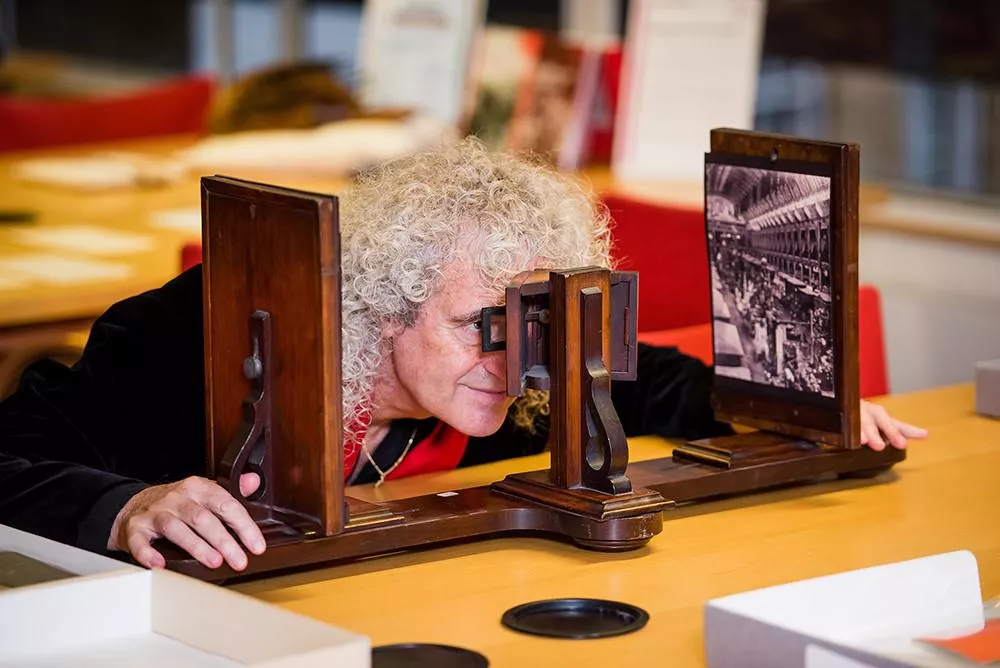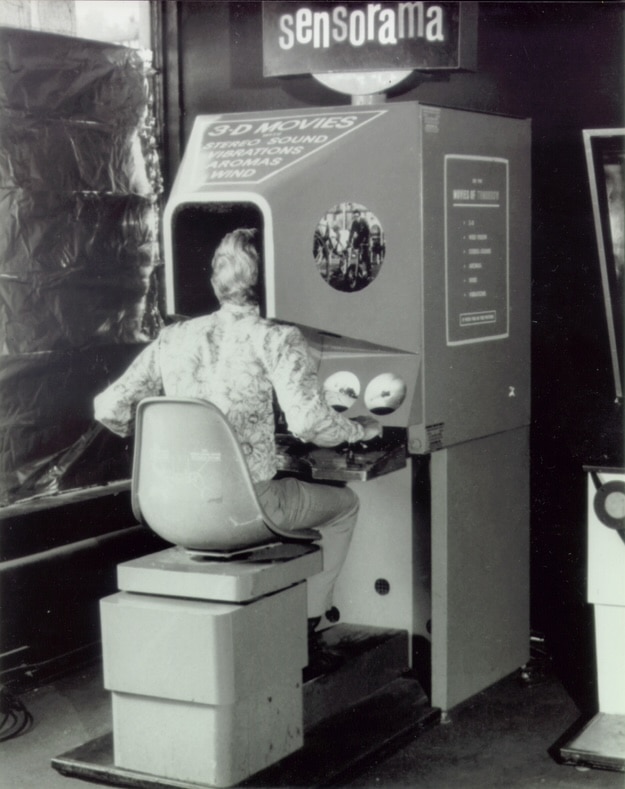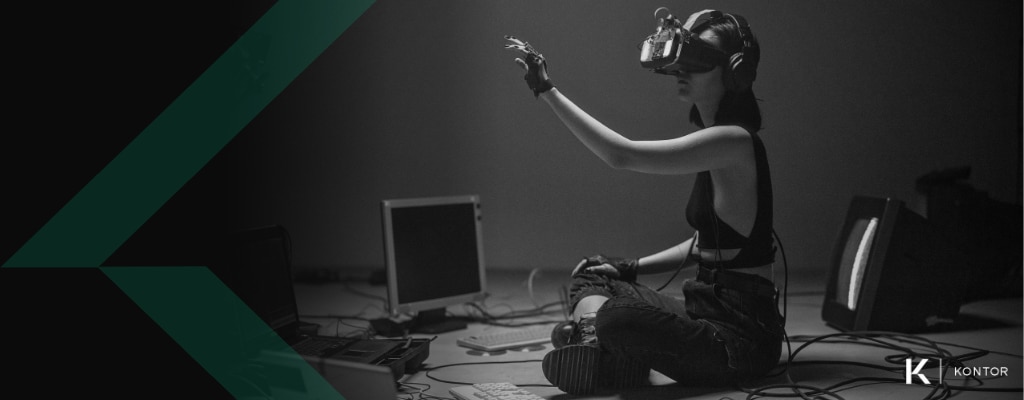What is virtual reality (VR)?

TL;DR: Virtual reality (VR) fully immerses a user into a virtual, digitally rendered world via a head-mounted display (HMD). Blocking the physical world from view, VR permits interactions with computer-generated objects and characters via controllers, hand and arm motion, speech, or other methods.
— — — — —
Virtual reality (VR) is a rapidly emerging technology that transports users into a digital environment via a head-mounted display (HMD). Once inside, the wearer interacts with visual elements while auditory cues, haptic feedback, and more deepen the immersive experience. The concept of VR has been around for several decades, but only recently has technological advancements made it more accessible, efficient, and visually stunning than ever before.
VR’s unique feature is its ability to make people feel that they’re truly present in a virtual environment. After donning a headset, users are placed in an interactive world, blocking the physical world from their field of view. Via high-quality graphics, 3D audio, and motion tracking, the wearer can look around and move within the virtual space as if they were physically there.
The concept of virtual reality was briefly covered in our previous blog — What’s the difference between virtual reality, augmented reality, and mixed reality? Here, we’ll dive a bit deeper, exploring VR’s evolution, how artificial intelligence (AI) amplifies what can be accomplished in VR, and to provide additional clarity into its differences from augmented reality (AR).
— — — — —
The evolution of virtual reality

Virtual reality (VR) was first made famous through the research of Sir Charles Wheatstone in 1838, which detailed the concept of stereopsis. In The Perception of Depth, Michael Kalloniatis and Charles Luu describe stereopsis as, “Our ability to appreciate depth, that is, the ability to distinguish the relative distance of objects with an apparent physical displacement between the objects.”
In his study, Wheatstone identified that the brain could combine two photographs (one eye viewing each) of the same object taken from different points to make the image appear to have a sense of depth. His research led him to construct the stereoscope, a device consisting of two mirrors positioned at 45-degree angles, each reflecting a picture from the side.

Wheatstone’s stereoscope | Photo by King’s College London | KCL.ac.uk
In 1962, the first VR machine called “Sensorama” was developed by cinematographer Morten Heilig. His goal was to fully immerse people in film. He created a booth where a person sits down, slides forward, and brings their eyes to two lenses.
 The Sensorama machine, created by Morten Heilig | Engadget.com
The Sensorama machine, created by Morten Heilig | Engadget.com
Once inside, multiple technologies combined to stimulate the senses, including full-color 3D video, audio, smell, and atmospheric effects like wind. Heilig dubbed Sensorama as “the cinema of the future.” In an interview with Heilig in 1984, he said the following about the Sensorama, “Wind against your body, smell, stereophonic sound, 3D, peripheral vision, a large picture… this is 30 years ago and now today, there is nothing as complete as this.”
Virtual reality has come a long way from mirrors and movie booths. The development of the Oculus Rift headset in 2010 amplified popular interest in VR. Today, hundreds of companies are developing virtual reality products, making the technology even more accessible to consumer markets.
— — — — —
Virtual reality and artificial intelligence transport users to a new dimension

Virtual reality can transport users to entirely new dimensions of experience. The integration of artificial intelligence (AI) further amplifies VR’s capabilities.
AI can elevate the realism of virtual experiences by analyzing user interactions and adapting in real-time. AI can even tailor digital environments to individual preference and action. But it doesn’t end there — AI used in VR can generate lifelike interactions with digital elements like human avatars, blurring the line between the virtual and the actual.
As AI continues to evolve, refining how VR environments respond to inputs, the sense of immersion will feel more genuine.
— — — — —
Difference between virtual reality and augmented reality
 People working in augmented reality | Photo by Microsoft | Dynamics.Microsoft.com
People working in augmented reality | Photo by Microsoft | Dynamics.Microsoft.com
The differences between virtual and augmented reality were covered in a previous blog, but it’s important to share some of these distinctions here. VR and AR are often confused with one another. They both reshape the perception of reality, but they offer contrasting experiences to users.
VR immerses users in digital environments, replacing physical surroundings with computer-generated simulations. It isolates users from the surrounding (real) environment, facilitating an escape into a digital realm.
AR blends digital content with the real world. Through smart glasses and goggles, emerging devices, and even smartphones, users see the physical environment with computer-generated elements overlayed onto them. AR bridges the gap between digital and physical realms, delivering real-world interactions enhanced by digital elements.
The main distinction between VR and AR lies in their approach. VR replaces reality with a fully immersive digital experience, while AR supplements reality by layering digital elements onto the physical world. Both technologies have their own merits and applications, catering to different needs and preferences.
— — — — —
Conclusion

Interest in virtual reality has grown considerably, and more people want to explore its capabilities. As technology advances and becomes more affordable, VR will become ingrained in our daily lives. It’s already revolutionizing industries and shaping new experiences that were once only imaginable in science fiction.
Virtual experiences are also becoming more realistic by integrating artificial intelligence. Using AI, VR environments dynamically respond to user interactions, creating personalized scenarios. The future possibilities of AI used in VR are endless as it continues to push boundaries and redefine what we perceive as reality itself.
— — — — —
About Kontor
Kontor is a premium accessories brand for virtual and augmented reality. We enable extended use times and less distractions from the physical world through accessories that deliver supreme wearability.
Our team was born out of ResMed, a leading medical device manufacturer that transforms care for people with sleep and breathing conditions. We have over 30 years of anthropometric design observation and expertise and uniquely understand facial geometry and skin science.
If you’d like to discuss partnering with Kontor, fill out our online contact form and we’ll be in touch.
To stay up to date with what Kontor is working on, sign up for notifications at the bottom of this page.
